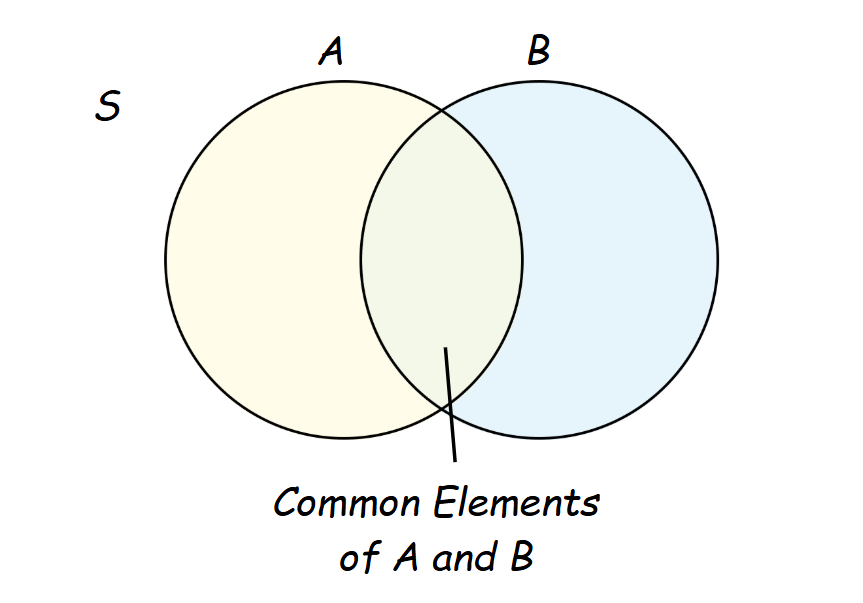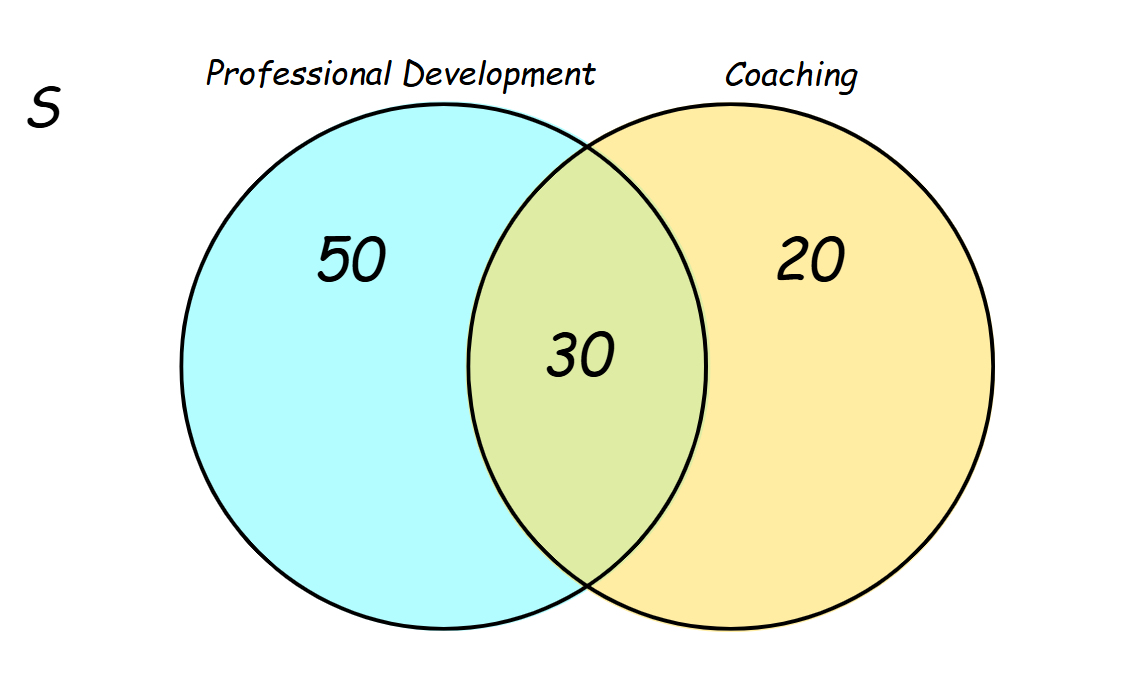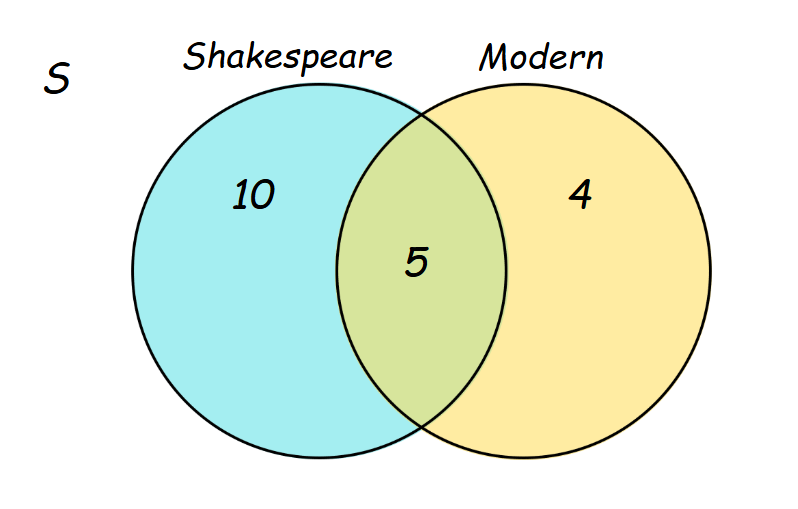Venn diagrams are a a tool for analysing situations where there is some overlap among groups of items, or sets.
Circles represent different sets and a rectangular box around the circles represents the universal set, \(S\), from which all the items are drawn:

Elements, or members, are terms often used to describe the items in a set. When some elements of one set are also part of another, these are referred to as common elements.
Visually, this relationship is depicted using overlapping circles. Furthermore, if every element of set \(C\) is also an element of set \(A\), then set \(C\) is considered a subset of set \(A\).
Example
Suppose in a recent survey of 120 employees at a company, 80 participated in a professional development workshop, 50 received one-on-one coaching from a senior manager, and 30 employees engaged in both activities. Determine the number of employees that didn't participate in either of the activities.
We can subtract the overlap from each group's total to find unique participants:
- Professional Development only: \(80 - 30 = 50\)
- Coaching only: \(50 - 30 = 20\)
We can visulize the number of participants using a Venn Diagram:

Therefore, we can determine the total number of employees not participating in any activity is 20.
There are 12 students on the soccer team and 18 on the hockey team. When organizing a joint practice session, the coach needs to secure transportation for only 22 students. Use a Venn diagram to visualize this setup.
- Determine the number of students on both teams
- Calculate the number of students exclusively in each team's section of the diagram and describe the significance of these sections
i. The total number of students attending the practice is \(22\). If we add the students on the soccer team (\(12\) students) and the hockey team (18 students) without considering any overlap, we would incorrectly calculate a total of \(30\) students.
To find the actual number of students on both teams, we subtract the total students attending from this sum:
\(\text{Students}_{(\text{Both})} = 12 + 18 - 22 = 8\)
\(\text{Students}_{(\text{Both})} = 8\)
Therefore, we can determine that 8 students are on both teams.
ii. The number of students exclusively on the soccer team is:
\(\text{Students}_{(\text{Soccer})} = 12 - 8\)
\(\text{Students}_{(\text{Soccer})} = 4\)
The number of students exclusively on the hockey team is:
\(\text{Students}_{(\text{Hockey})} = 18 - 8\)
\(\text{Students}_{(\text{Hockey})} = 10\)

The Venn diagram should reflect these calculations with 8 in the overlapping area, 4 in the Soccer only section, and 10 in the Hockey only section.
